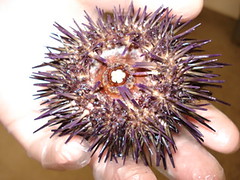It’s seems as good a time as any to recognize and share some inspiring and insightful blogs. Especially, since the blog, 365 Days, acknowledged Beach Chair Scientist as a Kreativ Blogger (a much appreciated, peer award). In that spirit of camaraderie, here are 7 compelling and very insightful 7 bloggers, as well as more on 365 Days. The protocol on the Kreativ Blogger recognition calls for me to write 7 facts about myself. Earlier this week though I published my Bucket List over at Bucket List Publications and it’s peppered with plenty of information for you to get to know me better.
1. 365 Days: A fellow ‘shoe lover, need I say more? This blog is exceptional because of the commitment of the self proclaimed ‘nerdy’ mom. She’s on a mission to take a picture every day and share it with her readers. But, also sprinkled throughout the blog are crafts, games, and snippets that are anything but typical.
2. Ann Novek | With the Sky as the Ceiling and the Heart Outdoor: She enjoys the outdoors and she also doesn’t have an ‘e’ at the end of her first name.
3. Earth First! Newswire: If you want to be up-to-date on worldwide environmental issues you should be following this blog.
4. Dispatches from the Potomac: As a new-to-Virginia outdoors lady, I resonate with the words and images of this writer and outdoorsman. Plus, his dog has the same name as my daughter.
5. Ocean Acidification: This blog is a central place for all information available on ocean acidification, as well as its consequences on marine organisms and ecosystems.
6. Literarybex: She likes creative writing and the ocean and she shares her thoughts in a most unique style. It’s always a good read!
7. Photography + Science = Chanel: What can I say except that Chanel is ‘livin’ the dream’. She shares great articles on marine biology and photography, as well as random rants with an energy and enthusiasm that I hope she keeps forever!
8. Bucket List Publications: This is a blog started by traveler extraordinaire Lesley Carter. It is essentially a community of people all sharing their bucket list adventure on one blog. I have to say it is incredibly inspiring!












What people are saying …